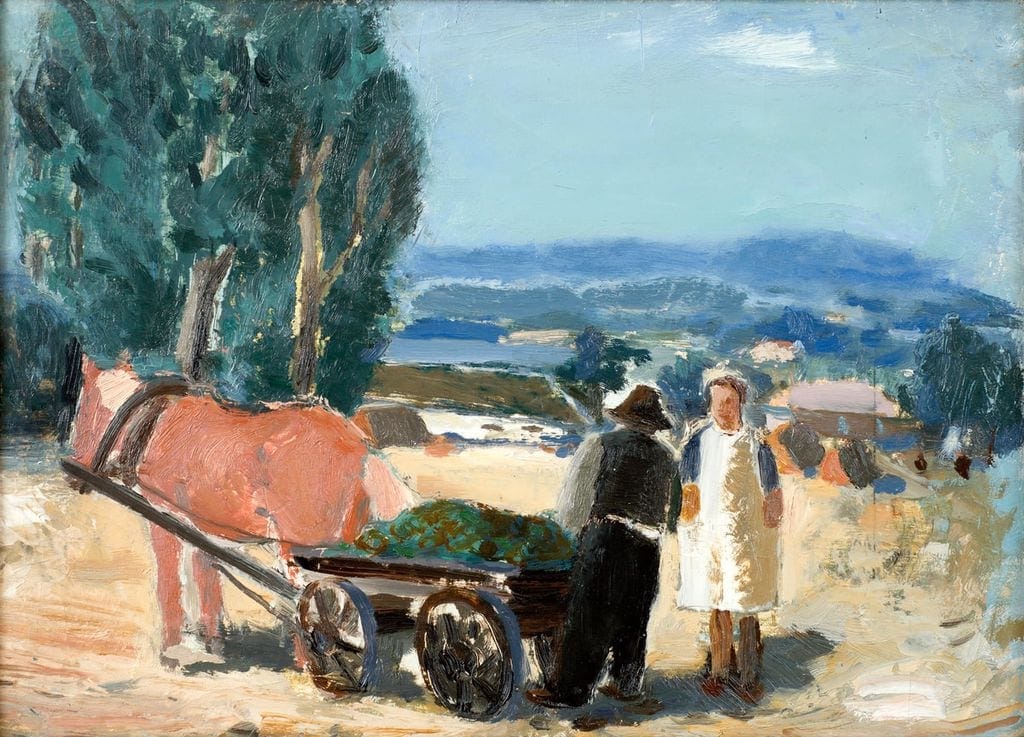
Numerous Estonian artists started building fantasy worlds in their paintings at the start of the 1940s. This means that they tried to stop time and to depict in their works a mythical ideal moment when everything in society is (as if) harmonious and whole. This was a reaction to what was taking place in the nation: since it was impossible to depict political events (and most of these artists also probably did not want to), then a utopian alternative was offered in their works – a moment when time has frozen forever and the former so-called good life continues endlessly. Important key words in these utopias were harmony with nature and the traditional way of life. Lepo Mikko also did not paint arrests made by the NKVD, but rather a farmer wearing a slouch hat who has hitched up his horse and wants to haul something somewhere in a landscape bathed in sunshine. A woman is conversing with him. There is no conflict between them, their poses are comfortable and sincere, perhaps they are exchanging their last words before heading out, or one is reminding the other of something. Not a single choice of colour reflects melancholy or fear: on the contrary, the trees are luxuriantly green and the different belts of colour stretching out into the distance are yearningly blue until they blend in with the light blue canopy of the sky at the horizon. Mikko has hidden the people’s faces. The farmer has turned his back towards us and brown brushstrokes replace the woman’s face. Mikko does not want to paint faces. People’s expressions do not seem to be important to him, or he simply wants to avoid them for some reason. Everything that takes place around people has been far more interesting to the artist, whether it be abstract patches of colour behind the woman or the variation of brown on the surface of the ground. This is a parallel world of 1942, situated somewhere in the past, but painted in the hope that it will last forever.